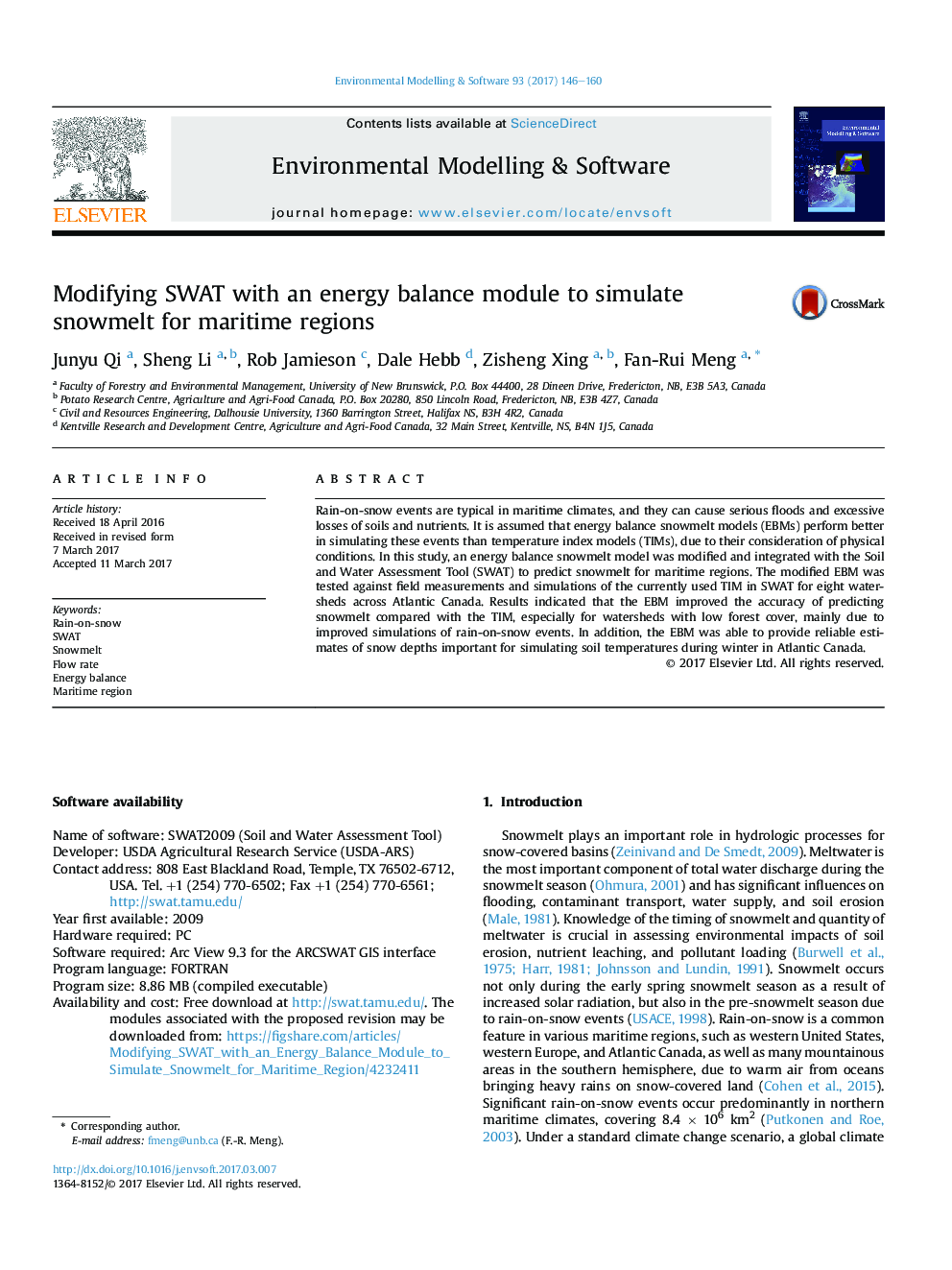| Article ID | Journal | Published Year | Pages | File Type |
|---|---|---|---|---|
| 4978084 | Environmental Modelling & Software | 2017 | 15 Pages |
Abstract
Rain-on-snow events are typical in maritime climates, and they can cause serious floods and excessive losses of soils and nutrients. It is assumed that energy balance snowmelt models (EBMs) perform better in simulating these events than temperature index models (TIMs), due to their consideration of physical conditions. In this study, an energy balance snowmelt model was modified and integrated with the Soil and Water Assessment Tool (SWAT) to predict snowmelt for maritime regions. The modified EBM was tested against field measurements and simulations of the currently used TIM in SWAT for eight watersheds across Atlantic Canada. Results indicated that the EBM improved the accuracy of predicting snowmelt compared with the TIM, especially for watersheds with low forest cover, mainly due to improved simulations of rain-on-snow events. In addition, the EBM was able to provide reliable estimates of snow depths important for simulating soil temperatures during winter in Atlantic Canada.
Related Topics
Physical Sciences and Engineering
Computer Science
Software
Authors
Junyu Qi, Sheng Li, Rob Jamieson, Dale Hebb, Zisheng Xing, Fan-Rui Meng,
